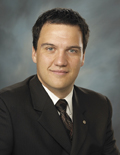Page Content

Something magical unfolds in schools on the afternoon of the last day before Christmas break. A calm descends as teachers’ thoughts turn to spending time with family and setting aside, for a while at least, the day-to-day work of teaching.
The magic builds slowly just after the last notes from the Christmas concert fade and the last few exams are written. It comes from the realization that the work that began in earnest in September is winding down and a time to rest is near.
September always starts with a bang. Teachers finish off year and unit plans, and try to get a start on lesson planning. They create, revise and modify assessments, develop individual program plans, arrange team meetings and consult parents. And don’t forget—those professional growth plans are due at the end of September.
October intensifies as marking increases and so do the number of phone calls teachers make to parents. Planning continues and extracurricular activities heat up. November may include report cards, parent–teacher interviews, jurisdiction meetings and PD activities. By the time December rolls around, work is well under way on the school concert as teachers try to catch up on paperwork, e-mails and professional reading. And let’s not forget about supervision, tutoring and staff meetings.
Then there are the many initiatives to take into consideration, from the local Alberta Initiative for School Improvement project on differentiated instruction to the jurisdiction’s initiative on assessment to the school’s plan to combat bullying. Teachers are concerned about initiative overload and burnout and how they affect their time with students.
Teaching is demanding and all-encompassing. Teachers want to provide their best service and make adjustments to their instructional and assessment methods to do so. These things take time and energy and add to an already brimming workload.
Two recent studies conducted by the Association in collaboration with Rocky View and Calgary Public locals investigated teachers’ concerns related to workload (see “Conditions of professional practice deteriorating—ATA,”
page 4).
A survey of teachers in the Rocky View Local found that having so many initiatives divides teachers’ attention and increases their workload. According to that study, 40 per cent of teachers said instructional duties interfere with their ability to teach, 48 per cent said they had difficulty maintaining a balance between work and personal life and a whopping 75 per cent said that digital technologies are increasing their workload.
A study conducted by the Calgary Public Teachers Local found that teachers work an average of 56 hours per week. Of those 56 hours, they spend 19 on direct instruction and 35 on non-instructional such as planning, marking, reporting, supervising, going to meetings and doing clerical work. In addition, teachers spend an average of just over an hour a week on extracurricular activities (in the cases of many teachers, though, extracurricular activities in some weeks account for closer to 10 hours; for some it is up to 20).
In other words, the research shows that teachers spend the bulk of their time (the equivalent of a full-time job) outside the classroom.
No wonder teachers are exhausted. In the past four months, the average Alberta teacher has worked the equivalent of six months of full-time work (based on a 35-hour work week).
That is why, with Christmas in the air, it’s important to relax, spend time with family, have some eggnog and recuperate.
From all of us at the ATA, Merry Christmas and Happy New Year!
I welcome your comments—contact me at jonathan.teghtmeyer@ata.ab.ca.
